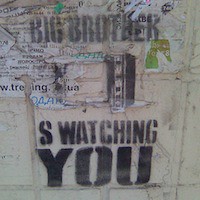Inauguration History (January 20, 1937-2009)

As laid out in the Constitution of the United States, a President is chosen by the body of electors every four years.1 Prior to the ratification of the 20th Amendment, the President did not take office until March 4th. The time between the election in November and the swearing in, in March became the “Lame Duck” period. During the 17- and 1800’s, this period wasn’t necessarily a problem, but as transportation and communication ways grew, the Lame Duck period developed into a problem. The most notable “Lame Duck” case was the period when John Adams was on his way out and held many midnight sessions of Congress to pass laws into effect. 2 The 20th Amendment was proposed in March of 1932 and ratified in January of 1933, fixing some of the gaps left by the wording of the 12th Amendment.3
As a result of the date change, Franklin Delano Roosevelt was the first to be sworn in on the newly appointed date in 1937 for his second term in office. President Roosevelt was also the only President to serve for more than two consecutive terms. Amendment 22, however, rendered the possibility of serving more than two terms—consecutive or not—obsolete.4 President Roosevelt was elected for four terms, but died only 100 days after his inauguration in 1945.
Fast forwarding about 15 years, the youngest man to be elected President took office on January 20, 1961—John Fitzgerald Kennedy. Not only was he the youngest President elected (he was 44), he was also the first Roman Catholic President.5 During his inaugural speech, he delivered one of the most famous lines of oratory in modern times: “Ask not what your country can do for you; ask what you can do for your country.” Kennedy was well on his way to becoming one of the greatest Presidents of the 20th Century. He focused on change and progressive thinking. His first term—and his life—was cut short by an assassin’s bullet on November 22, 1963.
A bit of inauguration day trivia: President Ronald Reagan was publically inaugurated for his second term of office on January 21, 1985. Why? Because the 20th fell on a Sunday that year. There was a private ceremony on the 20th at the Capitol. The 21st, however, was one of the coldest days in Washington, D.C. The ceremony, therefore, was held inside the rotunda.6
The following year, January 20, 1986, marked the first year that Martin Luther King, Jr. Day was celebrated as a national holiday. Why do I find this significant? For a great many reasons. First, Martin Luther King, Jr. was a black man. He, like Frederick Douglass nearly 100 years before, fought for equality and Civil Rights. It was King who proclaimed the famous words, “I have a dream,” and went on to tell of his dream of equality for all races.7 Frederick Douglass lived to see his dream of slaves being freed, becoming citizens, and being granted the right to vote. King never lived to see his dream of equality—he never lived to see his dream of peace and brotherhood. He was assassinated in 1968.
Forty-one years after King’s death—on January 20, 2009—his dream came true with the inauguration of the first African-American President, President Barak Obama.8 Change has come to America.
For more information on Barak Obama, please visit some of the other Bella sites including:
Democratic Party
Current Events
As a result of the date change, Franklin Delano Roosevelt was the first to be sworn in on the newly appointed date in 1937 for his second term in office. President Roosevelt was also the only President to serve for more than two consecutive terms. Amendment 22, however, rendered the possibility of serving more than two terms—consecutive or not—obsolete.4 President Roosevelt was elected for four terms, but died only 100 days after his inauguration in 1945.
Fast forwarding about 15 years, the youngest man to be elected President took office on January 20, 1961—John Fitzgerald Kennedy. Not only was he the youngest President elected (he was 44), he was also the first Roman Catholic President.5 During his inaugural speech, he delivered one of the most famous lines of oratory in modern times: “Ask not what your country can do for you; ask what you can do for your country.” Kennedy was well on his way to becoming one of the greatest Presidents of the 20th Century. He focused on change and progressive thinking. His first term—and his life—was cut short by an assassin’s bullet on November 22, 1963.
A bit of inauguration day trivia: President Ronald Reagan was publically inaugurated for his second term of office on January 21, 1985. Why? Because the 20th fell on a Sunday that year. There was a private ceremony on the 20th at the Capitol. The 21st, however, was one of the coldest days in Washington, D.C. The ceremony, therefore, was held inside the rotunda.6
The following year, January 20, 1986, marked the first year that Martin Luther King, Jr. Day was celebrated as a national holiday. Why do I find this significant? For a great many reasons. First, Martin Luther King, Jr. was a black man. He, like Frederick Douglass nearly 100 years before, fought for equality and Civil Rights. It was King who proclaimed the famous words, “I have a dream,” and went on to tell of his dream of equality for all races.7 Frederick Douglass lived to see his dream of slaves being freed, becoming citizens, and being granted the right to vote. King never lived to see his dream of equality—he never lived to see his dream of peace and brotherhood. He was assassinated in 1968.
Forty-one years after King’s death—on January 20, 2009—his dream came true with the inauguration of the first African-American President, President Barak Obama.8 Change has come to America.
For more information on Barak Obama, please visit some of the other Bella sites including:
Democratic Party
Current Events
You Should Also Read:
Election History (November 4)
The 15th-1/2 President (February 18, 1861)
I Have a Dream... (August 28, 1963)

Related Articles
Editor's Picks Articles
Top Ten Articles
Previous Features
Site Map
Content copyright © 2023 by Christa Mackey. All rights reserved.
This content was written by Christa Mackey. If you wish to use this content in any manner, you need written permission. Contact Lane Graciano for details.







